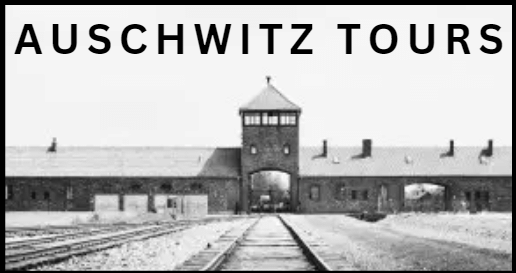Liberation Of Auschwitz
The liberation of Auschwitz occurred during the final stages of World War II in 1945. Auschwitz was a complex of Nazi concentration and extermination camps located in German-occupied Poland, and it was the largest camp system during the war. The mass murder of Jews, Romani people, Soviet prisoners of war, and other groups deemed "undesirable" by the Nazis occurred at Auschwitz. The liberation of the camp was a significant event in the war and brought to light the horrific crimes committed by the Nazis against humanity.
Also Read: About Auschwitz
The Soviet Red Army launched a massive offensive against Nazi Germany's Eastern Front in January 1945, pushing them back towards Poland. As they advanced, they discovered the Auschwitz concentration camp complex in southern Poland, which had been operating since 1940. The Soviets were initially shocked by what they found, as they had never seen anything like it before. They quickly established a military hospital on the site and began providing medical aid and supplies to the surviving prisoners. The Soviet offensive and subsequent Auschwitz Liberation marked a turning point in the war, highlighting the atrocities committed by the Nazis and bringing attention to the need for justice and accountability.
In January 1945, the Soviet Army was advancing towards Poland and eventually reached the Auschwitz concentration camp complex, which had been established by Nazi Germany in occupied Poland. They were initially shocked by what they found, with evidence of mass murder and atrocities committed against prisoners. The Soviets discovered gas chambers, crematoria, and piles of human remains, which indicated the scale of the genocide that had taken place at the camp.
When the Soviet troops entered Auschwitz, they were shocked by the horrific conditions they found. Auschwitz prisoners were malnourished, sick, and living in squalid conditions. The barracks were overcrowded and unsanitary, and the prisoners were subjected to harsh labor and inhumane medical experiments. The gas chambers and crematoria were also discovered, revealing the true purpose of the camp as an extermination center for Jews, Roma, and other targeted groups.
The liberation of Auschwitz by Soviet troops on January 27, 1945, marked the end of one of the most horrifying chapters in human history. The prisoners were finally freed from the brutal conditions they had endured, but the physical and psychological scars would last a lifetime. Many prisoners were too weak to leave and died shortly after liberation. The liberation was a moment of hope in the midst of darkness, and a reminder of the resilience of the human spirit in the face of unimaginable cruelty.
Also Checkout: Auschwitz Tours
The Aftermath
The death toll at Auschwitz is estimated to be around 1.1 million, with 90% of the victims being Jewish. Other groups targeted by the Nazis included Romani people, Soviet prisoners of war, disabled individuals, and others deemed undesirable by the regime. The vast majority of those who were sent to Auschwitz were killed in gas chambers upon arrival, while others died from starvation, disease, and forced labor.
Checkout & Book: Tickets of Wawel Castle
Approximately 7,000 prisoners were found alive in Auschwitz when it was liberated, many of them emaciated and suffering from disease. These survivors were liberated by the Soviet army and received medical treatment and care before being sent back to their home countries or to displaced persons camps.
Also Read: Tourist Attractions Near Auschwitz
The liberation of Auschwitz came towards the end of World War II and had a significant impact on the course of the war. It served as a powerful symbol of the atrocities committed by the Nazi regime and helped to mobilize support for the Allies in their efforts to defeat Germany.
Suggested Read: Oskar Schindler's Enamel Factory
The liberation of Auschwitz marked a turning point in the Holocaust, bringing to light the full extent of the horrors that had been carried out by the Nazis. The liberation helped to document the atrocities committed and served as a crucial piece of evidence in the post-war trials of Nazi leaders. It also helped to raise awareness about the dangers of antisemitism and the importance of tolerance and human rights.
You May Also Like: Tours From Prague to Auschwitz
FAQs
When was Auschwitz liberated?
Auschwitz was liberated by the Soviet Union's Red Army on January 27, 1945.
Must Read: What to Expect in Auschwitz
What happened to the survivors of Auschwitz after liberation?
Many survivors of Auschwitz were relocated to displaced persons camps, while others were able to return to their homes if they had not been destroyed during the war. The process of rebuilding their lives was difficult, and many survivors faced ongoing trauma and struggles.
Who invented the concentration camp in Auschwitz?
When Germany attacked Poland in September 1939, the Schutzstaffel (SS), German Nazis, converted an army barracks into a POW camp. Later, as part of Hilter's Final Solution agenda for the annihilation of Jews, they turned it into the Auschwitz Concentration Camp.
Also Checkout: Warsaw to Auschwitz
How many concentration camps are there in Auschwitz?
Auschwitz, which was situated in German-occupied Poland, had three camps, including a death facility. Over the span of roughly two years, 1940–1942, the camps were opened. When the Soviet army liberated Auschwitz in January 1945, it was finally abandoned.
What is the best time to visit Auschwitz?
The best time to visit Auschwitz in Poland is during the early morning hours, as the place is less busier and less crowded during this time. Avoid the hassle and get your skip the line tickets, and explore the different attractions, gas chambers and museums inside the concentration camps.

